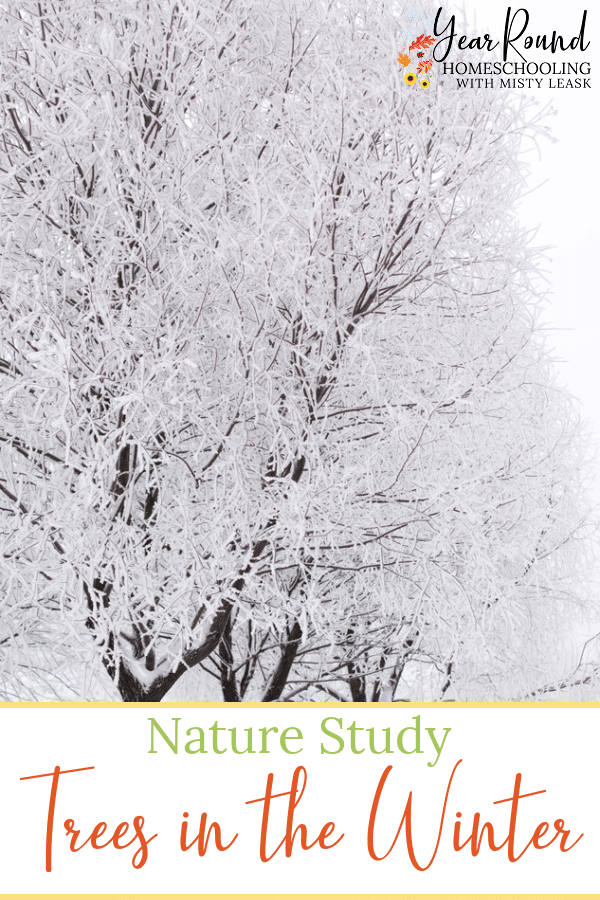Studying trees in the winter is a great way to cover seasonal changes in nature with your kids!

As part of a year-long tree study, my children and I observed trees in all four seasons. We have a red maple tree (Acer rubrum) in our front yard, and it’s fairly young. So, the branches were within easy reach for all of us to see up close, even my 7-year-old. Interestingly, to me anyway, right next door we had a sugar maple (Acer saccharum), so we could compare them easily.
Trees might seem to be rather boring in the winter, once their lovely fall leaves have dropped and blown away. The bare branches seem bleak and lonely to me, and I wait eagerly every year for signs of buds appearing, letting me know that spring is, indeed, on the way.
However, there is a lot to see in trees, even in the wintertime. We read a fabulous book together called Seeing Trees: Discover the Extraordinary Secrets of Everyday Trees, and we were inspired to look at trees in a whole new way. On page 82, we read this:
When most of us think of buds, we think of spring phenomena–and usually in association with garden flowers. But tree buds, which contain embryonic leaves, stems, and flowers, are usually formed in the summer before they grow into the forms they take in spring, and winter is one of the best times to see them.
That means it’s a good time to get outside and take a peek at some bare tree branches! If it’s too cold, you could even snap off a small twig and bring it inside to examine the leaf scars and buds. Make sure you sketch the things you find in your nature notebook!
Trees in the Winter Study Resources
- Winter Tree Identification – This is a fabulous resource! A gentleman named Leroy Jones, in Virginia, is hoping to conduct a nationwide study on the distribution ranges of trees. That means that certain trees only grow in certain areas of the country, and he would like to know where the ranges are for as many species as possible. He has some great PDF files that you will find useful in your winter tree studies, and if you submit your findings to him, you will be mentioned on the page of the trees on which you submit data. Pretty cool, eh? What a fabulous way for you to learn more about trees, AND participate in a scientific study!
- Winter Tree Finder: A Manual for Identifying Deciduous Trees in Winter – This inexpensive little book will be a great resource for you as you study deciduous trees in wintertime.
- Handbook of Nature Study – With over 800 pages, this is the best resource for any and all nature studies you’ll complete with your kids! A must-have item especially for Charlotte Mason homeschoolers, Unit Study homeschoolers and Unschoolers.
Bundle up and head outdoors with your kids. Get ready for your adventure and bring along a sketchbook, camera, binoculars and your favorite nature study guide!
Nature is all around us and it’s part of science! Follow our science Pinterest board below to keep your kids busy with science activities, experiments and more this year!
Follow Misty Leask’s board Homeschool: Science on Pinterest.
